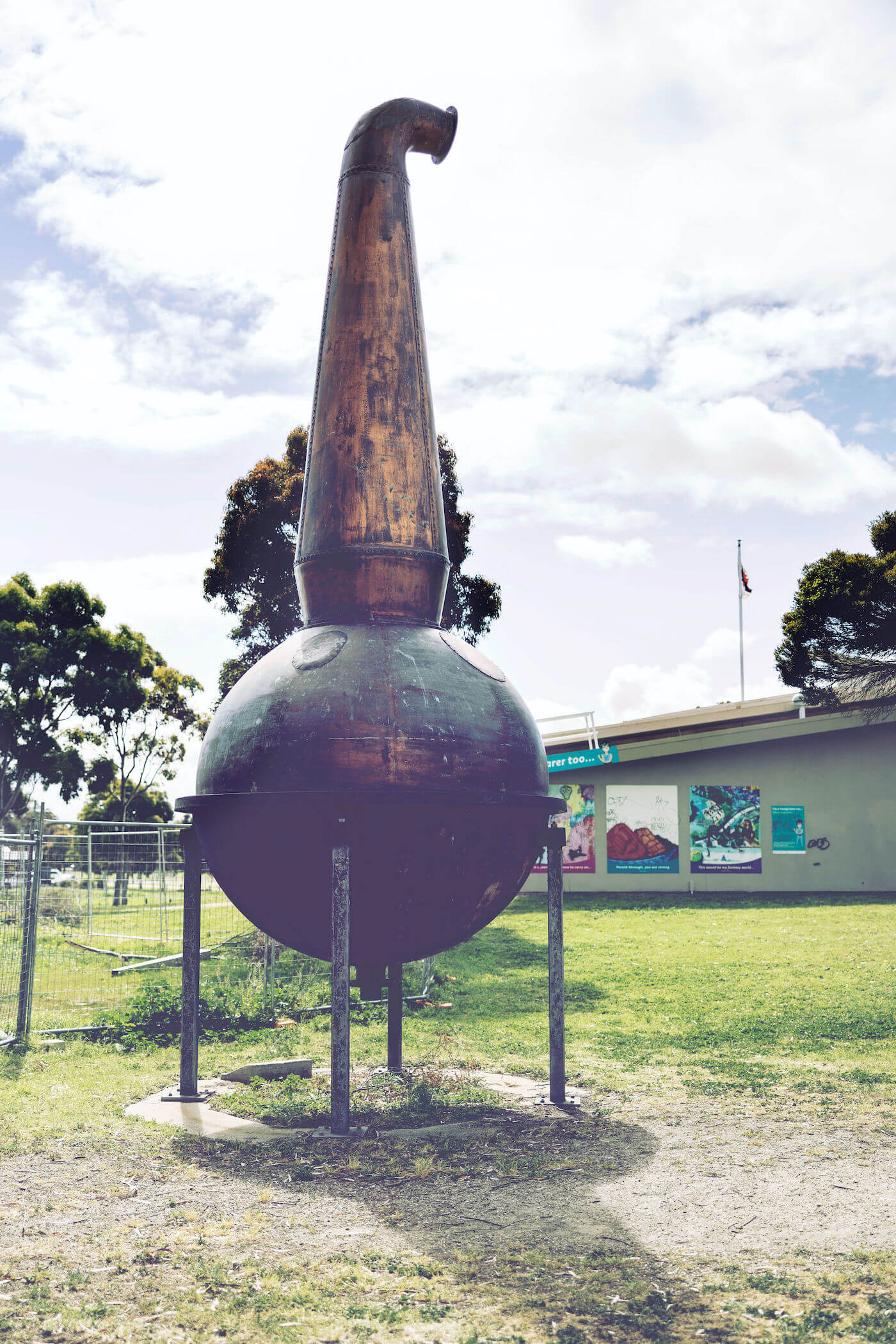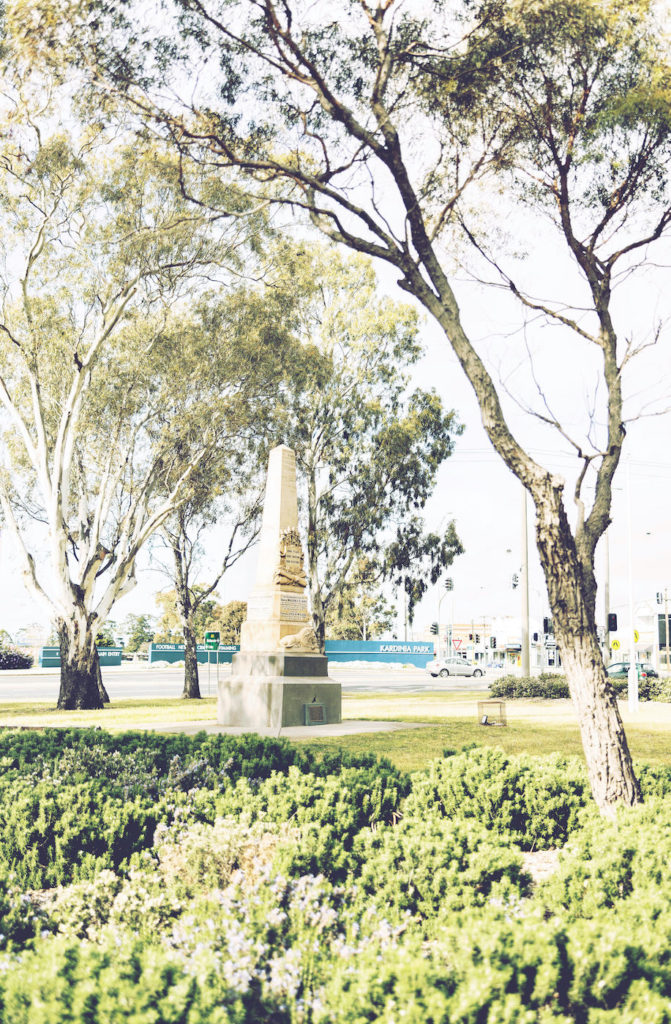Concrete Trough for Animals
George and Annis Bills were philanthropists with a love of animals. They established a trust for the protection and alleviation of suffering to animals which furnished over 500 public horse troughs between 1924 and 1945 — three which remain within the Greater Geelong area.
Most troughs were installed in Australia; over 300 remain. Troughs were also installed in England, Ireland, North America, South Africa, Japan and Switzerland. Each trough cost £13 (just over $1000 today) to fabricate and install in the 1930s. From the 1880s to 1900s, George and his brother Henry ran successful businesses importing and selling birds, and manufacturing mattresses and sofas. George and Annis were keen supporters of the Society for the Prevention of Cruelty to Animals; George later becoming a Life Governor of the RSPCA. Annis and George built the first troughs in 1908. Annis died soon after, and George set up a trust to: ‘construct and erect and pay for horse troughs wherever they may be . . . desirable for the relief of horses and other dumb animals either in Australasia, in the British Islands or in any other part of the world’.
To honour his wife and country, each trough was to be labelled ‘Annis and George Bills Australia’. Following George’s death in 1927, the trust was administered by his sister Daisy Cook. Initially the troughs were individually designed and constructed. Then in the early 1930s Jack Phillips, a relative of the Bills, produced 250 precast concrete troughs to a standard design at his Hawthorn factory. Rocla pipes took over production in the late 1930s, which discontinued around 1945. The Bills’ Trust shifted its focus, helping to finance the RSPCA Tally Ho Animal Rest Home and the George Bills RSPCA Rescue Centre during the 1960s.
Prince Edward
Corner of Moorabool and Brougham Street
The statue of Prince Albert Edward was commissioned by Sir William John Clark and carved by Charles Summers, founding member of the Victorian Society of Fine Arts to commemorate the death of King Edward VII in 1910. The statue was originally housed in the Melbourne Public Library before being presented to the people of Geelong by the National Gallery of Victoria in 1939. In 2013 the statue was restored, a new head, arm and toe were carved from matching white Carrara Italian marble.
To the Unknown Mariner
by Cam Scale
The unknown mariner was commissioned by the City of Greater Geelong in 2015. The enormous artwork by Cam Scale was a made as a tribute to the maritime history of Geelong. The life of a Mariner is not always easy. This mural captures the life and tales of an old man of the sea, a face that has been weathered by time and the elements.
Boer War Memorial
LaTrobe Terrace
The monument was erected by public subscription in 1902 as a historical mark of the Boer War and the Proclamation of Peace on the 2nd of June 1902. The obelisk also commemorates the four Geelong men who lost their lives in the Boer War; Trooper Walter E. Clark, Corporal Eric A. Wilson, Alston T. Dickinson and Francis James.
Cranes in Botanic Gardens
The cranes were originally purchased for WR Wilson’s St Albans’ Park homestead in around 1873 for £400. Mr Wilson was a race horse breeder and trainer with an appreciation for Asian cultures. The cranes were then purchased by City of Greater Geelong in 1929 and placed in the newly developed water fountain under the Eastern Beach Improvement scheme. The cranes were consistently vandalised therefore they were moved to the Geelong Botanical Gardens in the 1970’s and were replaced by replicas.

West Geelong War Monument
The West Geelong War Monument was erected by the citizens of Geelong West to commemorate those who served in World War I. The memorial was unveiled by the Governor, Lord Somers on 18 September 1927. The memorial was dedicated by the Reverend J.J. Booth.
Ozone Monument
Foreshore, St Leonards
The ‘Ozone’ was a paddle steamer built in Scotland in 1885. It was sailed to Australia and was used to transport passengers between Melbourne and Geelong. The ship officially retired in 1918 and was sunk off Indented Head in 1925 to create a safe harbour on a coastline badly affected by windstorms. In 1992 the anchor of the ‘Ozone’ wreck was retrieved from the bay and in 1995 was placed on The Esplanade as a commemorative monument.

Shipping Buoys
Geelong Waterfront
Sea travel and transport was crucial in the early history of Geelong. Necessary stock and supplies were brought in by sea and exports left in the same way. Infrastructure such as buoys and beacons were placed within the in the bay to mark channels. The buoys that are placed on the Geelong Waterfront today are the original marker buoys that were placed in Corio Bay.

Boat Winch, Western Beach
The Geelong Harbour Trust leased the Western Beach sites to various boat-building and servicing companies, such as Higgs Brothers, Charlie Blunt’s Boatbuilders and Barrow’s Boatyard. Slipways were installed to winch boats up from the water for maintenance and repair works. The fishing boats currently on the winches were built by master shipwrights at Western Beach. Many boats were crafted in the area from the 1920’s as Western Beach became Geelong’s chief maritime focus.

Reflection Seat Sculpture
2014, by Jacinta Leitch
The reflection seat sculpture by Jacinta Leitch was commissioned by the City of Greater Geelong in partnership with Care Leavers Australia Network in 2014. It serves to create a place of quiet reflection for all, and in particular for the thousands of children placed into Orphanages and children’s homes throughout the Geelong region.
Gin Still, North Geelong
This Gin Still showcases the large distilling history within Geelong. Geelong once housed the largest whisky distillery in the southern hemisphere, The Corio Distillery. Built in 1928 and closed in 1989, the venture cost Scottish and Australian firms £200,000 (about $15 million at today’s prices) to pipe water from the Upper Barwon river to the distillery site. Today Geelong still produces a large amount of spirits.

Waterfountain
Eastern Beach
The fountain was revealed in 1929 under the Eastern Beach Improvement Scheme, designed to beautify the central Geelong waterfront which had been deemed an eyesore for many years. The iconic cranes in the centre of the fountain were purchased by City from a resident of St Albans’ Park homestead for £25. The cranes were moved to the botanical gardens in the 1970s after they were consistently vandalised. Replica cranes were made to replace the monument at Eastern Beach where they are found today.
East Geelong War Memorial
The East Geelong War Memorial was erected in 1921 to commemorate the servicemen from the East Geelong, St Albans and Moolap districts who lost their lives in action in World War I. It bears forty-five names of soldiers who died in conflict.







